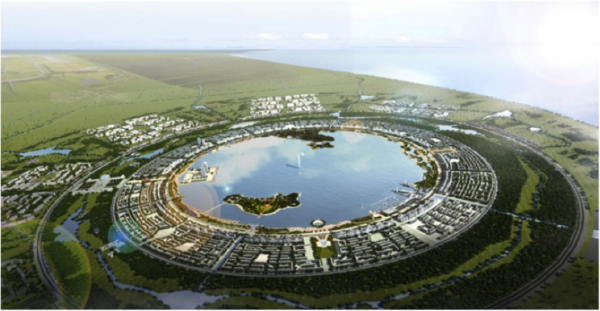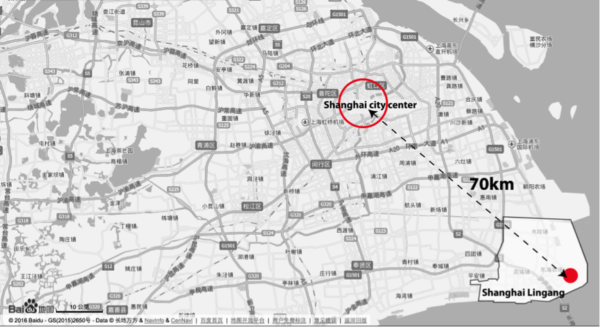Governing the future city – The development of the ‘new city’ of Lingang in Shanghai
Governing the Future City is an international ESRC-funded project looking at innovative approaches to urban governance and planning in Johannesburg, London and Shanghai. This blog, following on from an introductory article by Jenny Robinson, gives an overview of the case study area of Lingang, a new city developed near Shanghai.

Shanghai Lingang is located in the southeastern part of Shanghai and covers an area of 315km2. The Shanghai municipality officially launched the development in 2002. Unlike many other new towns that were developed in Shanghai during the 2000s (such as the ‘one city, nine towns’ projects), a large share of Lingang’s urban land was reclaimed from the sea. The Lingang area is divided into two main land uses: the industrial zone, which covers an area of 240.99km2, and the main residential town with an area of 67.76km2.
Similar to other major urban developments in China, a competition was launched to decide on the final masterplan. The German company GMP Architects won the competition with its masterplan concept, which conceived Lingang as a drop of water falling into the sea, which then created ripples. This concept is reflected in the new town’s circular shape and the large artificial ‘Dishui’ lake that has a diameter of 2.5km. The design of Lingang was also inspired by Howard’s garden city philosophy as the main town is divided into five circular zones. The lake is at the center of the new town and the lakefront area provides commercial and leisure facilities such as water sports and supermarkets.

The final station of the number 16 metro line is also located in this area. The first ring area provides a variety of functions including residential, service and offices. The projected population of Lingang was 800,000 residents, although so far only around 200,000 residents live in Lingang, large proportions of whom are students. So far, the development has been led by state owned development corporations.
With regards to the governance of Lingang, the Shanghai Lingang Area Development Authority (SLADA) governs the entire Lingang project and is responsible for the masterplan and the allocation of resources and land. However, SLADA itself does not get directly involved in the development of a specific project. Instead, eight major development corporations, each responsible for one section of Lingang, carry out the actual development, although there are also some smaller private developers. For instance, the Lingang Harbour City Development Corporation is responsible for the development within the main town, whilst the Shanghai Lingang Economic Development Corporation takes charge of developing the heavy equipment-manufacturing zone. These development corporations all belong to the state, though to some extent they operate as private companies with a mandate to generate profit.
For our research in Lingang, we will pay close attention to the motivations of different government bodies in promoting the development, and explore how the state interacts with the market as well as local communities in order to carry out the development.